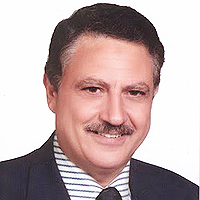Effectiveness of an Ayurvedic Gel for Tooth Pain Relief Due to Dental Caries: A Randomized Controlled Trial
Published on: 19th June, 2024
Aim: To evaluate the effectiveness of an ayurvedic gel in tooth pain reduction due to dental caries. Materials and methods: This in vivo cross-over design study enrolled adults with at least one tooth with caries and a symptom of pain after the application of an ice stimulus. Two hundred patients were screened and eligible patients were enrolled in the study. Forty-five subjects completed washout phases before each recall visit. During each recall visit, subjects evaluated pain relief following an ice bar stimulus and one random finger-tip application of a treatment i.e. Ayurveda Herbal gel containing clove oil, camphor, and menthol (Ayurveda Herbal Gel Group), and two control formulations: a gel without active ingredients and commercial olive oil as a surrogate of home remedy. At each assessment, subjects used a stopwatch to record the onset of pain relief and tooth pain using visual analog scores (VAS), dental pain scores (DPS), and relief from tooth pain by dental pain relief scores (DPRS). After each treatment, subjects recorded their satisfaction with the provided treatment using a four-point satisfaction index. Data were tabulated and statistical analysis was performed with (ANCOVA) and two-way ANOVA with a p - value of 0.05 considered statistically significant. Results: Forty-five subjects (28 males and 17 females) completed the entire study without any adverse events. Application of the Ayurveda gel resulted in a significantly faster onset of pain relief (2.47 min) in comparison to the onset of pain relief after 4 minutes recorded with the controls (p < 0.05). Subjects reported lower VAS and DPS scores over the study period of evaluation when using the Ayurveda gel compared to the application of each control formulation. Subjects also reported greater relief of pain and greater satisfaction after the application of the Ayurveda gel as compared to the controls. Conclusion: Significantly better tooth pain relief from caries was observed from an Ayurveda Herbal gel than from controls.
Experiences of Consumers on the Health Effects of Fake and Adulterated Medicines in Nigeria
Published on: 4th July, 2024
Medicines are used to cure and treat ailments, relieve or eliminate disease symptoms, and slow down the disease process. Any attempt to disrupt this natural medicine process, using falsified medications, spells doom to a consumer of such medication. The challenge of fake medicines is a global one and affects developing and developed nations and currently assumes great significance as a result of globalization challenges, which have flattened the entire world, hence removing barriers to the movement of products and services. The cross-sectional survey was conducted, using six local government areas of Anambra State in South-East Nigeria, namely Awka, Nnewi, Onitsha, Aguata, Ogbaru, and Anaocha, among adults aged 18 years and above. A minimum sample size of 500 was calculated and stratified sampling was employed to select respondents in order to ensure that various population groups, the upper class, middle class, and lower class were represented.This research has shown that falsified medicine is an evil wind that blows nobody any good. It negatively affects every aspect of the citizen’s livelihood, ranging from their health, which manifests as treatment failures, deformities, loss of life to death, to loss of confidence in the healthcare providers, revenue losses to individuals, healthcare providers, manufacturers, and finally corruption of the genuine medicines supply chain with fake and adulterated medicines.The study has clearly shown the experiences of residents of Anambra State, South-East Nigeria with fake and adulterated medicines and also services as a wake-up call to medicines regulators like NAFDAC, PCN, the PSN, and Federal Ministry of Health to declare a state of emergency on the fight against fake and adulterated medicines and make enabling laws that are punitive enough towards the fight against this scourge, so that the healthcare and well-being of Nigerians would be assured at all times.
Proactive Psychiatric Consultation and Hospital Length of Stay in Adults: A Review of the Literature
Published on: 4th October, 2024
According to a 2022 systematic review on the prevalence of psychiatric disorders in general hospitals, it was estimated that approximately one-third of medical inpatients present with a coinciding psychiatric condition. However, other studies have reported that a low rate of patients actually obtain an inpatient psychiatric consult; and even fewer patients receive a consultation when it would not be traditionally indicated. Therefore, we have seen an emergence of the use of Proactive Consultation-Liaison (C-L) Psychiatry across many hospital settings. This model of care utilizes systematic screening for active mental health concerns, proactive interventions tailored to individual patients, team-based delivery, and care integration with primary services to provide psychiatric consultation earlier. This study conducted a focused PubMed search to review the research to date on proactive C-L psychiatry and its impact on hospital length of stay (LOS) in patients over 18 years old. Results show a consequential reduction in average hospital LOS when proactive C-L psychiatry services are used compared to reactive, on-request consultation services. A shortened LOS is seen with this practice when there is a quicker time for consultation or referral. Thus, there is evidence of proactive C-L psychiatry’s success in decreasing average hospital LOS and improving patient care. Additional studies are necessary to determine its significance, as little research to date has been completed on the topic. It is recommended to expand the scope of investigation to different patient populations, including but not limited to pediatrics and patients without an underlying mental health illness.
Comparison of Body Fat Percentage and BMI in Pre-hypertensive and Hypertensive Female College Students of West Tripura
Published on: 3rd April, 2025
Background: Obesity is a significant health risk linked to hypertension and heart-related disorders in adolescents, impacting their future well-being . Since, the present work is to determine the body constitute including percentage of body fat correlates with cholesterol level which associate with Body Mass Index. Methods: This cross-sectional work was held in 120 college girls aged 19-23 years of Bhavan’s Tripura College of Science and Technology, Anandanagar at West Tripura. Anthropometric measurements such as standing height, body weight, sub scapular and triceps skinfolds, waist &hip circumference were collected. These records were used to calculate Body Fat Percentage (%BF) and Fat Mass (FM). Waist and Hip ratio (WHR) and Body Mass Index (BMI). FM, %BF and biochemical studies such as serum cholesterol level were also used to measures the body fat composition. Results: According to the present study, 53.33% of girls have a normal BMI, 8.83% are underweight, 31.67% are overweight, and 6.67% are obese. WHR results indicate that 54.17% of participants are classified as obese and 45.83% as non-obese. Out of 114 (95%) girls with normal cholesterol levels of 16 (13.33%) students are pre-hypertensive and 10 (8.33%) students are hypertensive. Out of 38 overweight and 8 obese students 13.34% are in pre or hypertensive. Based on WHR, 65 (54.17%) female students are obese; out of 65 obese students, 12 (10%) and 7 (5.83%) female students are pre-hypertensive and hypertensive, respectively and this value is statistically significant (p value < 0.05). Out of 55 (45.83%) no-obese students 8 (6.67%) girls are pre-hypertensive and 5 (6.67%) girls are hypertensive. According to BMI female students who are overweight or obese (5%) also have excessive blood cholesterol.Conclusion: This study expressed clear evidence of correlation in BMI, serum cholesterol level and Hypertension. These results are important for epidemiological studies to identify the cardiovascular risk in obese adults and help to solve a health problem of present Youngers in their future life. This study serves as an early health warning for female college students.
Unusual Complications of a Dental Prosthesis Esophageal Foreign Body: About a Case
Published on: 16th April, 2025
Foreign bodies of the esophagus are part of the traumatic emergencies in ENT. They are most often encountered in children, whereas in adults they occur in a particular context and are rarely overlooked.This was a 48-year-old patient from a neighboring country referred by a colleague for a history of neglected laryngeal contusion with infectious cervical fistula evolving for 2 years. Further questioning revealed a notion of accidental ingestion of dentures. The first endoscopy was of capital interest in especially in the diagnosis and management of this long-retained foreign body. The extraction under general anesthesia was done by a combined endoscopic and external approach. The postoperative course was marked by superinfection and swallowing disorders.Cervical suppurations secondary to esophageal foreign bodies are rare, especially in adults. Clinicians should consider this possibility in the face of any chronic cervical suppuration that resists treatment.
Cerebral Autoregulation-Directed Therapy in Adults with Non-Traumatic Brain Injury in Neuro-Critical Care: A Scoping Review
Published on: 15th May, 2025
Cerebral Autoregulation (CA)-directed therapy, or optimal cerebral perfusion pressure (CPPopt)-targeted therapy, is a tailored bedside method of resuscitation used in critical care that aims to achieve and maintain the CPPopt, to fit the precise cerebral hemodynamics and metabolic demand. Different processes and multiple tools are available to conduct a CA-directed therapy in acute brain-damaged adult admitted into critical care settings, but literature is limited and primarily focused on traumatic brain injury; however, for other brain conditions. By this scope review, we aim to describe the main procedures used by authors to achieve a CA-directed therapy, as well as its acquisition methods and its usefulness in acute non-traumatic brain-damaged adult in neurocritical care.




